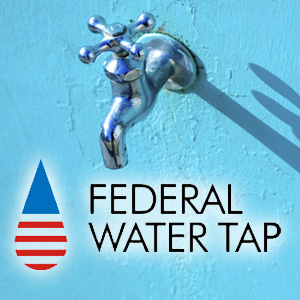The Stream, May 1: Arsenic-Contaminated Water Threatens Health In Northern India
The Global Rundown
Millions of people are at risk from water contaminated with high levels of arsenic in India’s Bihar state. Depleted reservoirs have created water shortages in Hyderabad, India. Europe’s dependence on soybean imports from water-scarce areas of the world could increase food prices, a study found. The rapid pace of hydropower development in China’s Yunnan province has created a surplus of electricity. Conservationists in Australia argue that water savings from a more efficient cotton industry should go to the Murray-Darling River Basin, not additional crops. A bill in Wisconsin could reduce oversight of high-capacity water wells, which have been blamed for drying up lakes.
“Forget daily water supply. We are lucky to get water for a few hours every alternate day.” –V Phani, a resident of Hyderabad, India, referring to a severe water shortage in the city that officials blame on poor rainfall. The major reservoirs supplying Hyderabad range from 12 to 54 percent full. (Hindustan Times)
By The Numbers
30 percent Proportion of tested groundwater wells in India’s Bihar state that have arsenic concentrations above 10 parts per billion, the limit set by the World Health Organization. Doctors in the region say high levels of arsenic are responsible for cancer among residents, and more than 10 million people are at risk. CNN
62 gigawatts Hydropower capacity in China’s Yunnan province, ten times more than the amount available in the province at the turn of the 21st century. Researchers, however, say not all of that electricity is being used, raising questions about the pace of dam development and the ability to export electricity to other markets. The Third Pole
40 percent Estimated improvement in water efficiency in Australia’s cotton industry over the past decade. Farm groups and conservationists disagree about whether those water savings should go to help the Murray-Darling River Basin or to grow more crops. Guardian
In context: Australia’s food bowl, like the world’s, is drying up.
Science, Studies, And Reports
Approximately 57 percent of Europe’s soybean imports are grown in areas that are vulnerable to water scarcity, according to a study conducted by the Water Footprint Network for the European Union. Because soybeans are used as animal feed, poor harvests abroad would likely increase European prices for meat and dairy, researchers found. Reuters
On The Radar
The Wisconsin State Assembly will vote on a proposed law Tuesday that could reduce the powers of the Department of Natural Resources to oversee high-capacity water wells. Residents of the state’s Central Sands region say agricultural wells in the area are drying up lakes, but farmers insist that claim is unproven. The state Senate already approved the bill. Associated Press
In context: Wisconsin towns face groundwater crisis alone.
A news correspondent for Circle of Blue based out of Hawaii. She writes The Stream, Circle of Blue’s daily digest of international water news trends. Her interests include food security, ecology and the Great Lakes.
Contact Codi Kozacek





